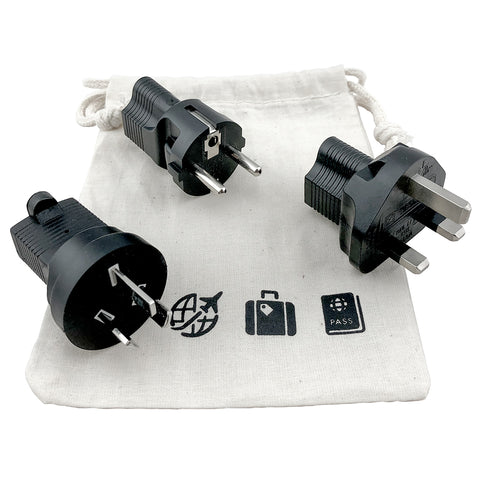The Most and Least Expensive States to Buy an EV

Electric vehicles are growing in popularity across the world as more people aim to reduce their carbon footprint and take advantage of this emerging technology.
Though EV charging infrastructure is still in its infancy and the sale of gasoline and diesel cars is still astronomically higher than EVs, there have been some significant gains thanks to federal and state incentives.
A study by Energy Innovation found that most EVs are cheaper to operate than gas cars and state tax credits can reach up to $7,500 for EV owners so there are plenty of financial reasons to consider making the switch.
However, the cost of electric vehicles is still prohibitive for purchasers, with Consumer Reports finding that many luxury models are $12,000 more expensive than the auto industry average.
Affordability is a major consideration for any new car buyer so to make the right choice, we’ve analysed the cost of a new electric car against the average salary in every state to determine how affordable it is wherever you are.
Key findings
- New Jersey is the cheapest state to buy an EV in 2023. The estimated monthly cost of repayments is just 14.39% of the average monthly salary.
- New Mexico is the least affordable state for EVs. The monthly cost of a new electric car is 23.82% of the average monthly salary.
- Only two of the top 10 states for EV sales growth are in the top 10 for affordability - New Jersey and Texas.
- California has the highest concentration of EV purchases of any state, with 70 cars for every 1,000 residents bought in 2022.
EV affordability by state
The best states for EV affordability
1. New Jersey - 14.39%
New Jersey is known for its commitment to EV adoption for many reasons. Studies have found that the state is the cheapest place to run an EV, and the state is one of the most supportive of EV purchasers in terms of tax incentives.
With just 14.39% of the average monthly salary needed for the payments of an EV, it’s no surprise the state has seen a 36.53% growth in sales in the last year.
2. Massachusetts - 14.97%
With the average monthly salary in Massachusetts coming in at $5,488 after tax, EV purchasers only need 14.97% of their salary to keep up with their car payments. EVs in Massachusetts are also eligible for a tax credit of up to $3,500.
3. New Hampshire - 15.35%
Though New Hampshire doesn’t offer any additional tax credits above the federal minimum for an EV purchase, it’s still one of the most affordable states to buy in. There were 31 EVs bought per 1,000 residents in 2022.
The worst states for EV affordability
1. New Mexico - 23.82%
In addition to EV repayments being the highest percentage of the statewide average salary, New Mexico also doesn’t offer any extra tax incentives above the federal minimum. These factors are probably why there’s only been a 22.11% growth in EV purchases in the last year, the 40th lowest state for growth.
2. Arkansas - 23.75%
Another state that doesn’t offer financial incentives, Arkansas EV sales are also one of the poorest of any state in the last year. However, the state is one of the worst for charger coverage, with just 412 ports.
3. Mississippi - 23.41%
Though it may not be the worst state for affordability, EV adoption in Mississippi is clearly low for a reason. The state is the second worst for purchases last year, with only 9 cars bought per 1,000 people.
The states with the best and worst EV incentives
The best states for tax incentives are California, Connecticut and Maine, where buyers can enjoy a credit up to $7,500. This has no doubt helped EV adoption, with the states coming first, 16th and 14th for car sales per population respectively.
Oklahoma offers $5,500 in credit, Colorado $5,000 and Oregonians enjoy a $5,000 rebate rather than a credit. This helps to reduce the initial down payment of a new EV, which is $10,694 on average.
On the other hand, there are 32 states that offer no additional tax incentives for EV drivers. 25 of these states also have an annual registration fee of up to $214. With EV sales representing just 3.77% of all car sales in the US last year, these initiatives are vital to improving adoption across the country.
The 10 states with the best EV growth
1. Oklahoma - 41.94%
Despite being one of the least affordable states to purchase an EV, Oklahoma is enjoying a boom in purchases. With more than 40% growth, the state had the 28th-highest number of registrations last year.
2. New Jersey - 36.53%
New Jersey’s efforts towards electrification are working with consumers. It’s the state with the 10th highest number of EV registrations last year as well as the most affordable place to buy.
3. Nevada - 36.4%
With 32 EVs sold for every 1,000 people last year, Nevada is another state seeing major growth in the field. Despite its lack of extra incentives and an average affordability rate, people in the state are willing to pay for the new technology.
The 10 states with the worst EV growth
1. Wisconsin - 18.46%
With only 881 EV chargers in the state, Wisconsin is below average on EV infrastructure which could be contributing to a lower rate of growth in the last year. The number of registrations last year is also around 200,000 lower than average.
2. Minnesota - 18.81%
Minnesota’s EV infrastructure is slightly better than Wisconsin’s, with over 1,000 EV chargers in total. However, the state is below average for affordability and provides no additional incentives for buyers.
3. Iowa - 19.88%
Despite an okay affordability rate of 18.32% of the average salary, Iowa’s adoption of EVs is one of the poorest in the country. Only 59,700 were registered last year, making the state the 20th worst in the country.
Methodology
We started by determining the estimated monthly repayment costs for the average new EV, factoring in the initial 20% down payment. We then calculated the average take-home pay after tax for each state before finding the monthly repayments as a percentage of monthly salary.
Growth in EV sales was determined through the registration figures provided by the Department of Energy for 2021 and 2022.
Sources
- https://www.investopedia.com/car-loan-calculator-5084761 - Estimated down payment and monthly repayment costs
- https://taxfoundation.org/data/all/state/electric-vehicles-ev-taxes-state/ - The total state tax incentives and annual EV registration fees
- https://evadoption.com/ev-charging-stations-statistics/charging-stations-by-state/ - Any reference to the number of EV charging stations uses data from this resource
- https://www.unbiased.com/ - Used to calculate the average pre-tax salary for every state
- https://smartasset.com/taxes/ - Used to calculate estimate annual take-home pay after federal and state tax
- https://www.findmyelectric.com/blog/electric-car-prices/ - Average EV cost estimate taken from this resource
- https://afdc.energy.gov/vehicle-registration - Total EV registrations per year






